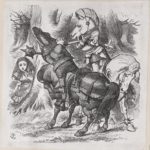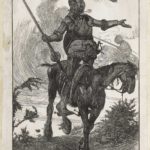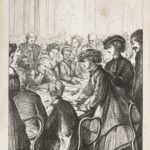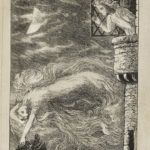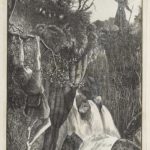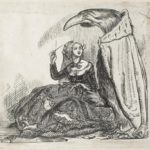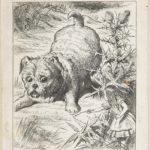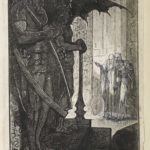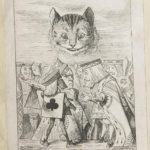Exhibition Intro ~ Map ~ Next section
Click a thumbnail to enter the gallery. Use the arrows at either side of the image to skip forward or back.
The first six images in this section present more-or-less traditional images of monsters, such as the famous Jabberwocky from Through the Looking-Glass. But the monstrous is an inherently unstable category. Etymologically, ‘monstrous’ means ‘unnatural’, but the monster in Dalziel’s illustration of Charles Kingsley’s Madam How and Lady Why is all about nature and the natural (no. 2 – see gallery above). Here, the dragon is a benign figure for a sublime glacier, and Kingsley’s text explores the natural world from fantastical, religious and scientific perspectives. Image four is from a cartoon by Alfred Thompson, called ‘Lecture on Bogueys’. The cartoon is a spoof series of professorial notes for a Christmas lecture, taking a comic look at the monstrous. The image was published with the following caption:
Third lecture. – On Dreamland and its Bogueys. Illustration: The Boguey one is likely to meet with after Lobster Salad. Whether suggested by the lady in the lobster’s head. Difference of nature in Dream-Bogueys produced severally by Pork and Toasted Cheese. Comic song – ‘Oh, would I could recall the past. (From Tom Hood, ed., The 5 Alls, c. 1866).
Following these monsters are five wood engravings that explore a range of modern masculine heroes, from different walks of life. These include three rescue scenes (nos. 7, 9 and 10), as well as an imperialist hunting scene (no. 11); hunting is not usually seen as heroic today, but it was for many Victorian readers. There is also a curious commercial illustration (no. 8) made for an unidentified client. Perhaps an advertisement for a Victorian fire extinguisher, or some kind of fire service, it is interesting to see the different way the masculine figure is represented here. In all the other images, we see a heroic human; here, we see an operative, and the machine has become the rescuer.
Other notable subjects in this section include images of comic chivalry (nos. 12–15) and images of vulnerable monsters (nos. 19–20). Considering that women frequently display heroic qualities in Victorian novels and other literature, it is striking that the heroic female does not play a prominent visual role in the wood engravings Dalziel made in these years. There are some images that celebrate feminine courage, however (nos. 16 and 18). And the illustration after Arthur Hughes from George Macdonald’s At the Back of the North Wind (no. 17) is an interesting example of the female body made strange and occupying a liminal role between hero and monster.
Bethan Stevens

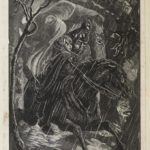
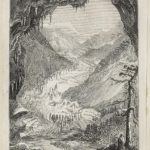
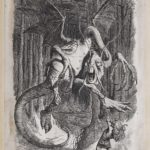
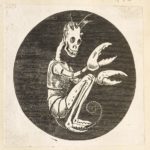
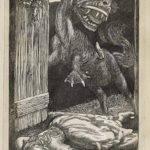
![Dalziel after John Tenniel, illustration for Lewis Carroll [Charles Lutwidge Dodgson], Alice’s Adventures in Wonderland](http://www.sussex.ac.uk/english/dalziel/wp-content/uploads/2016/07/HM6-20_p137-1.jpg-detail-6-1-150x150.jpg)
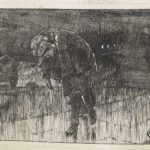
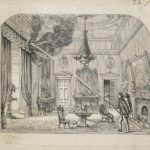
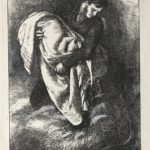
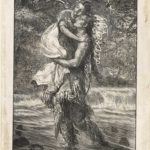
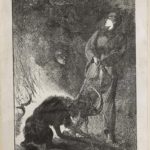
![Dalziel after John Tenniel, illustration for frontispiece to Lewis Carroll [Charles Lutwidge Dodgson], Through the Looking-Glass, and What Alice Found There](http://www.sussex.ac.uk/english/dalziel/wp-content/uploads/2016/07/HM12-28_p148-1.jpg-detail-1-150x150.jpg)
![Dalziel after George du Maurier, ‘Grey Dolphin’, illustration for Thomas Ingoldsby [R. H. Barham], The Ingoldsby Legends](http://www.sussex.ac.uk/english/dalziel/wp-content/uploads/2016/07/HM13-21_p338-1.jpg-detail-1-150x150.jpg)
